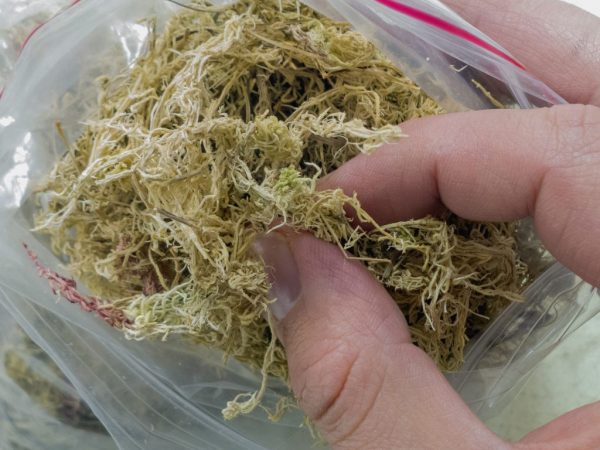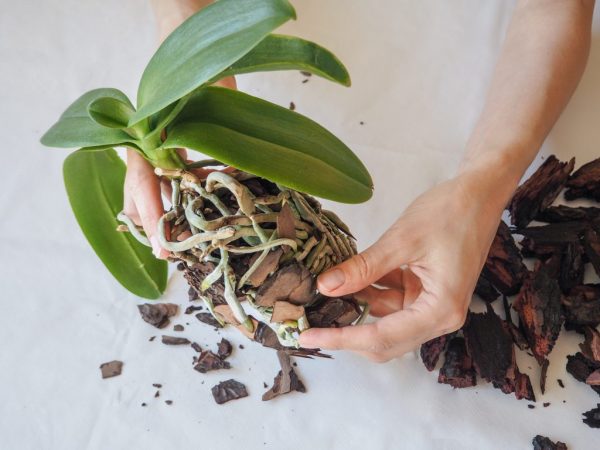How to propagate an orchid at home
Orchid is one of the most beautiful indoor plants. There are several varieties of this indoor flower. Orchid propagation at home is carried out according to special rules.

Orchid propagation
General recommendations
At home, orchid propagation methods are used, depending on the type of plant. But all orchids reproduce according to a number of rules:
- a new plant is obtained only from an adult and healthy flower with a well-developed root system;
- the peduncle must have at least 4 large leaves;
- use a plant that is at least 1.5 years old.
Reproduction by children
Orchids reproduce at home, as in nature, in different ways. The first is reproduction by children.
The offspring rearing method is easy to implement. Such cultivation of new specimens is used as soon as the mother plant has faded. Florists carry out the procedure from late February to early June.
New buds in the plant appear in the axillary leaves after the formation of flower arrows under the old foliage. It is in this place that buds and two types of dormant buds are formed. Some are intended for the development of young peduncles, while others contribute to the appearance of children.
Suckers are formed on the mother plant under the condition of high temperature conditions in the room and application of fertilizers with a high nitrogen content.
Landing
If the plant has released a young shoot, it is regularly watered with water and wait until it releases the root.
As soon as the roots grow back and reach a length of 5 cm, the babies are carefully separated from the mother bush. Places of cuts are treated with charcoal powder and left to dry for a day.
Young specimens are transplanted into a fine-grained substrate. After a few weeks, the lower leaves of the plants turn yellow and fall off. This is a natural process, after which an intensive development of the root system occurs in the planted children. In order for the process of formation of new roots to be continuous, the plants are provided with a stable temperature regime of 23 ° C-25 ° C.
If the plant slowly builds up the root system or does not build it at all, use one of the root growth stimulants - "Heteroauxin", "Epin" or "Kornevin".
Stimulation
It is difficult to propagate an orchid at home, because the flower does not always grow overgrown with children. If the plant does not form offspring, it is stimulated using a special paste. This process is called budding. On the sleeping kidneys, the scales are carefully removed, and cytokinin ointment is applied to the top.
This paste is prepared at home by mixing several available ingredients: 10 g of kinetin, 1 ml of water and 1 g of lanolin.
Another option, how to force the plant to acquire children: put moistened sphagnum moss on the buds, the place of development of offspring is wrapped in polyethylene, creating a greenhouse effect. After the growth of the shoots, the film and moss are removed.
Often, a houseplant produces only one shoot. To stimulate the development of additional offspring, the flower is placed in greenhouse conditions, providing a temperature regime within 28 ° C-29 ° C for 5 days. Then the kidneys are once again treated with hormonal paste.

Sphagnum moss for orchid propagation
Cuttings
It is possible to propagate an orchid at home with cuttings, but this method is more laborious and is suitable only for some varieties - Wanda, Epidendrum.
Reproduction by side shoots is carried out in several stages:
- on a healthy mother bush, lateral shoots 10-15 cm long or old elongated branches or a faded flower are cut off;
- the cut off shoot and the place of cut on the mother plant are sprinkled with crushed coal;
- then the cuttings are planted in a pot with a cut down.
Shoots are planted in the substrate used to grow these indoor flowers. To accelerate root formation in cuttings, the pots are placed in a warm place with a temperature of at least 28 ° C.
Subsequent care for planted shoots is the same as for adult specimens. Such reproduction of orchids at home allows you to get flowering indoor plants the next year after planting.
Air layering
At home, the flower is propagated by air layers. Such processes are formed only in some types of indoor plants: Dendrobium nobile and Epidendrum.
Some growers grow new specimens with stem processes in a special mini-greenhouse using sphagnum moss. In order for the bare shoot to develop correctly and quickly, it is laid horizontally on moistened moss and placed in a greenhouse.
The main conditions for sprouting are consistently high humidity and high temperatures in the greenhouse. If these conditions are met, after a month, the bare processes will release the roots.
Further, the rooted plants are planted in a nutritious substrate, sprayed and looked after in the same way as for adult flowers. At first, the planted shoots require stable heat - 26 ° C-28 ° C and high humidity.
Division of the mother bush
Among the species of orchid reproduction, the method of division is suitable for almost all varieties of an exotic flower. Vegetative propagation is used if it is planned to transplant an old specimen with massive roots.
For reproduction by dividing an orchid, an adult plant with 4 false bulbs and massive roots is required.
Before removing the rhizome, the substrate is well moistened. This makes it easier to extract the roots without the risk of injury. The root of the plant is shaken off the ground and cut with a sterile and sharp knife so that each section has 3 pseudobulbs. Places of cuts are sprinkled with charcoal powder and planted in the ground. Do not divide the bush too finely: small divisions will develop for a long time.
The method of reproduction of an orchid by dividing a bush is used not only for transplantation. It is used if pseudobulbs are visible on the surface of the substrate. Reproduction by division is suitable for the following orchid species: Cymbidium, Cattleya, Pafiopedilum. The rhizomes of these plants are massive and well overgrown with pseudobulbs.

Division of the mother orchid bush
Seed reproduction
Orchid houses can also be propagated by seed. This method is the most time consuming. The seeds of the plant are small and tender, do not contain a protective shell.
In nature, seed germination is carried out at the expense of the root sponge, which constantly feeds them. It is problematic to get sprouted seeds at home, because it is possible to create the necessary conditions only in the laboratory - it is difficult to propagate an orchid with seeds in an apartment.
It is important to know
There are several nuances to consider:
- seeds germinate for about 10 months;
- reproduction of orchids by seeds makes it possible to get an adult plant 2-3 years after planting a sprout in the ground;
- the first flowering is observed only 3-4 years after planting (in some species, flowering does not occur earlier than 10 years).
Nutrient medium for seeds
There are 2 options for making a seed meal:
- Mix fructose and agar-agar powder (10 g of each substance), then add the same amount of glucose, a pinch of calcium carbonate and phosphoric acid. The resulting mixture is poured with a glass of boiling water, stirred. Then the remaining ingredients are added to the jelly-like mass and stirred until smooth.
- Mashed banana pulp (40 g), granulated sugar (20 g), plant food (0.5 ml), tomato juice (100 ml), activated charcoal (2 tablets), honey (0.5 g) and boiled water ( 400 ml) are mixed until a homogeneous mass is obtained.
How to germinate
Before germination, the seeds are placed in a solution of 1% chlorine lime for 20 minutes. 40-50 g of the nutrient mixture is poured into a sterile sealed glass container. The seeds are removed from the solution and placed on a nutrient medium using a sterile medical syringe. Close the container tightly and place in a greenhouse.
There is another easier way to propagate an orchid at home using seeds. A special substrate is prepared from sphagnum moss and leafy soil. The nutrient mixture is moistened with a spray bottle.
The next requirement is to ensure a stable temperature regime within 26 ° C-28 ° C at high air humidity. Seeds sprout in white cotton wool, pre-moistened with water.
The picking of seedlings is carried out at the stage of the appearance of the first leaf. After the development of 4 leaves, plants are transplanted to a permanent habitat.
Cloning
Microclonal cultivation of flowers at home is a difficult method.
Step-by-step instructions for carrying out this process are carried out purely in laboratory conditions:
- using a special device, plant cells are taken that are capable of division;
- cells are placed in a special nutrient medium;
- after clots appear, the old nutrient medium is replaced with a new one, as a result a new plant is formed.
Meristem reproduction has one important advantage: the production of a large number of new specimens in a short period of time.
Conclusion
It is quite possible to propagate orchid varieties on your own. If you follow the simple rules for harvesting planting material, planting and further care, everyone will be able to grow a beautiful flowering plant on the windowsill.


